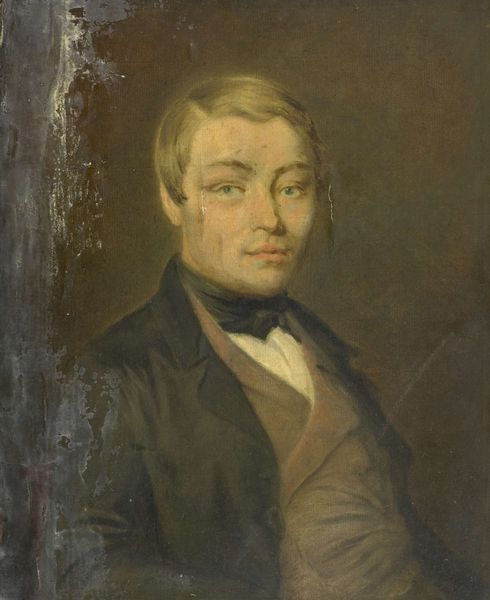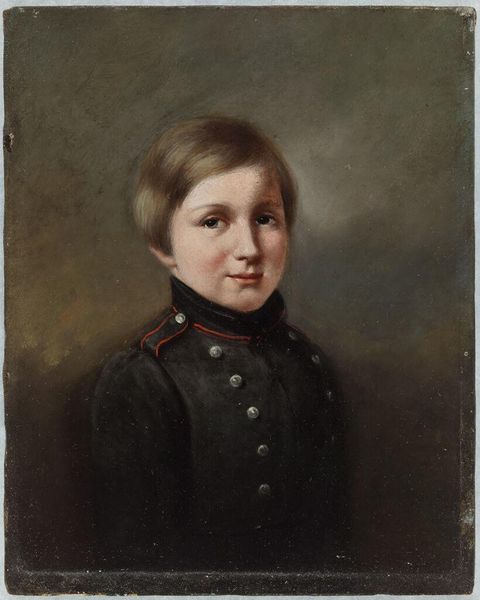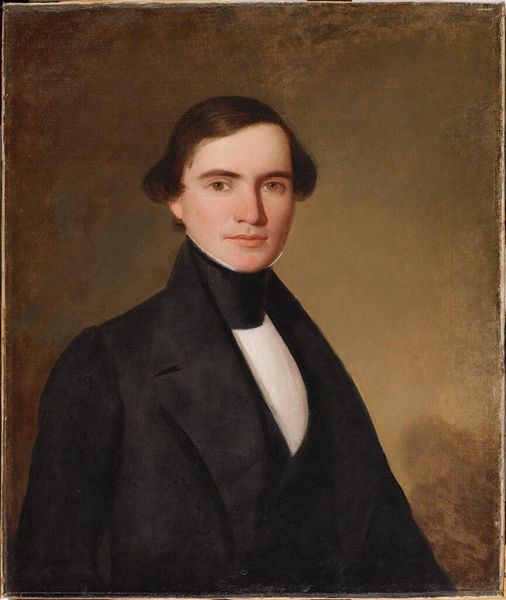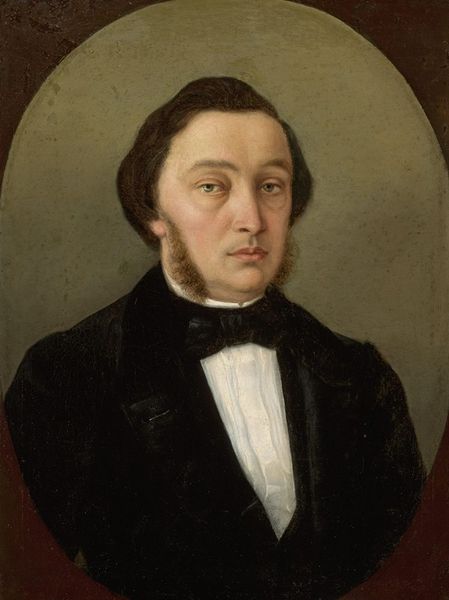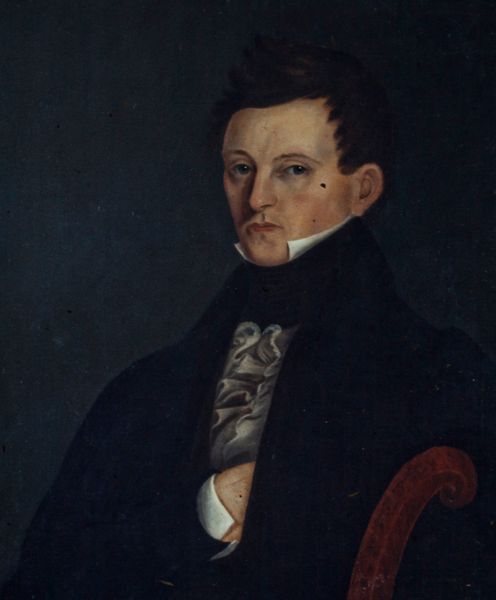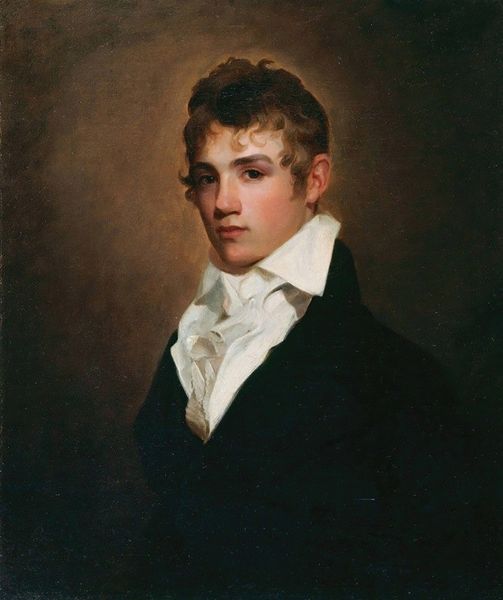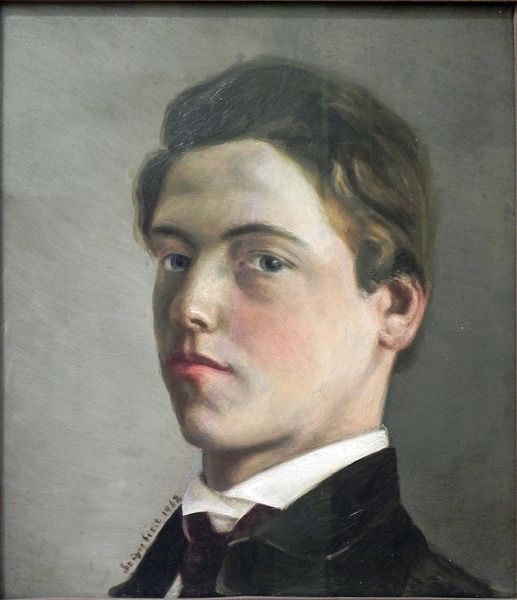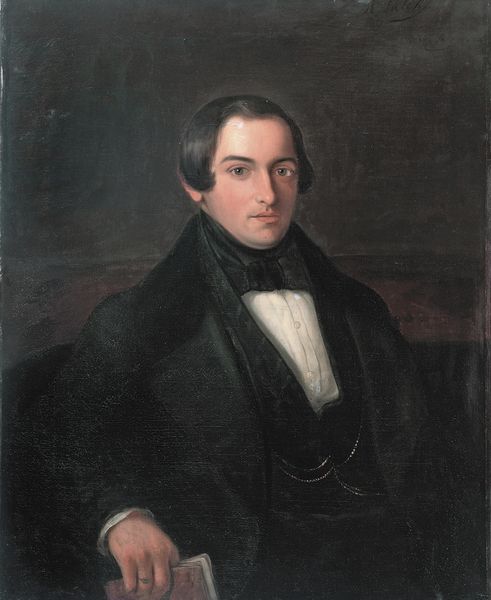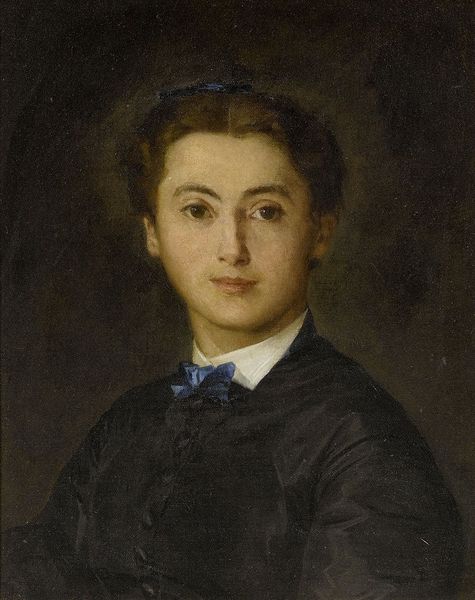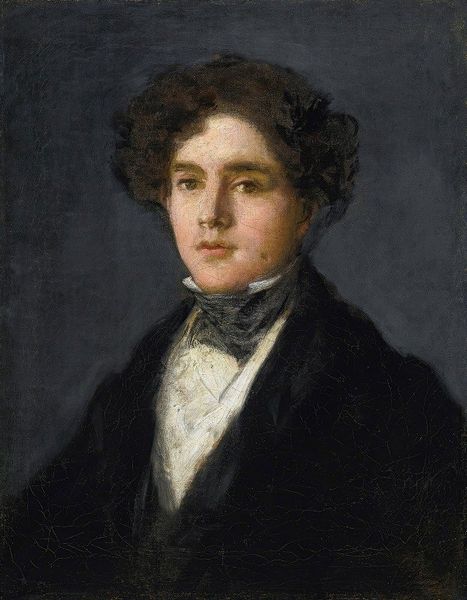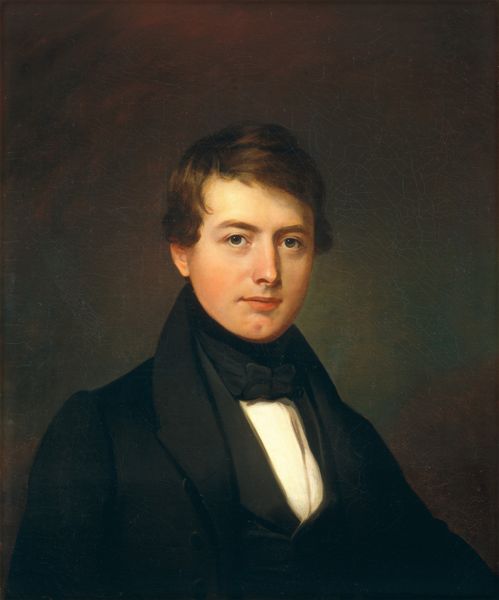
Dimensions: height 66.2 cm, width 49.9 cm, thickness 3.1 cm, height 74.6 cm, width 57.6 cm, depth 10 cm
Copyright: Rijks Museum: Open Domain
Jacobus Hermanus Otterbeek painted this portrait of Jacob van Eeghen at twelve years of age in 1830s Netherlands. Note the trappings of wealth and status, the formal suit, and the carefully arranged bow tie. The family clearly had the means to commission such a portrait, which speaks to the economic structures of the time. In the 19th century, portraiture served as a marker of social standing, reinforcing class distinctions. The institutions of art, like the art market and the commissioning process, played a role in upholding these hierarchies. The subject's gaze, direct and self-assured, suggests an awareness of his privileged position. Understanding this work requires a grasp of Dutch social history and the role of portraiture in affirming social status. Researching the Van Eeghen family and the economic conditions of the Netherlands in the 1830s would offer further insight into the artwork's context and meaning. Ultimately, art history helps us see how social and institutional forces shape what we see on the canvas.
Comments
No comments
Be the first to comment and join the conversation on the ultimate creative platform.
